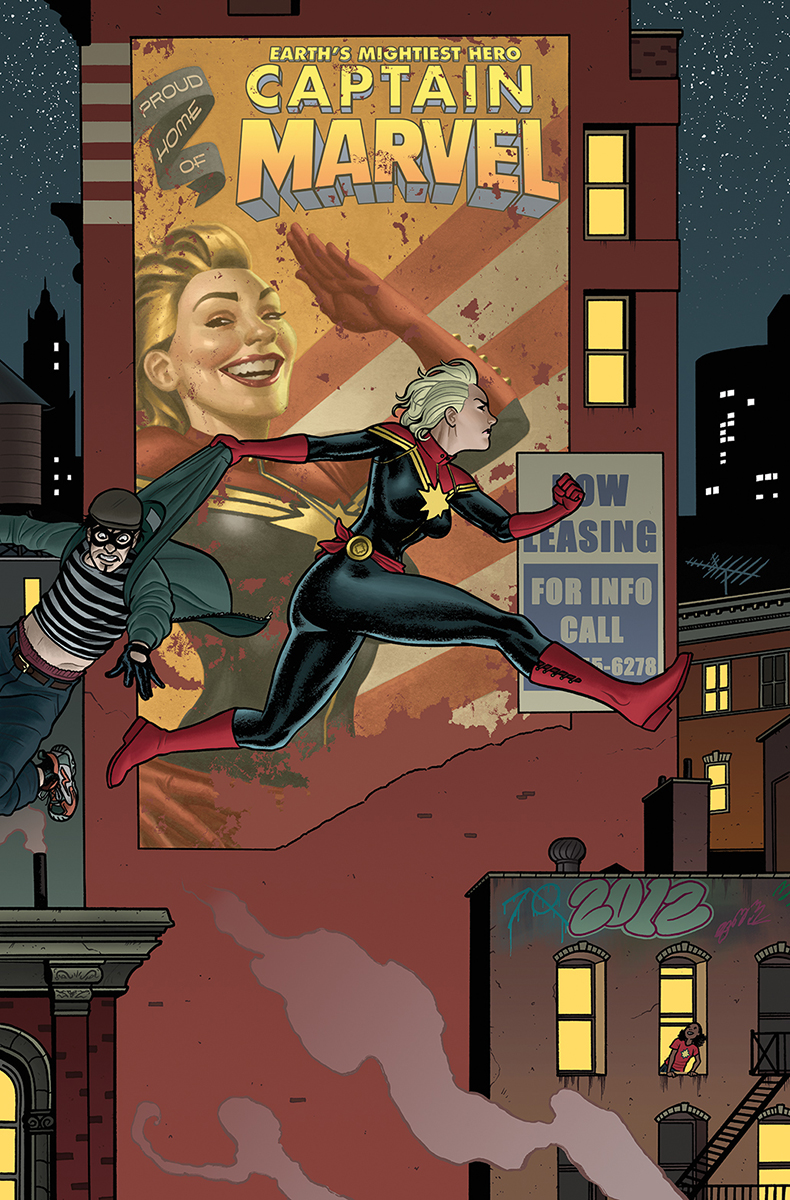Local Comics Shop Day is the latest holiday on the comics calendar, to be held November 28th, the Saturday after Thanksgiving. The date has been promoted as “Small Business Saturday” for a while, but this new date and focus will allow comics shops to tie in to the desire to shop locally and support small […]
Viewing: Blog Posts Tagged with: Filipe Andrade, Most Recent at Top [Help]
Results 1 - 2 of 2
Blog: PW -The Beat (Login to Add to MyJacketFlap)
JacketFlap tags: Retailing & Marketing, Image, Top News, Filipe Andrade, Bitch Planet, ian mcginty, Kelly Sue DeConnick, z2 comics, Margaux Saltel, valentine delandro, Add a tag
Blog: PW -The Beat (Login to Add to MyJacketFlap)
JacketFlap tags: Comics, Marvel, Captain Marvel, Top News, Marvel Now, Kelly Sue DeConnick, Jordie Bellaire, Filipe Andrade, Reviews, Add a tag
The relaunch of Captain Marvel, with Carol Danvers in the title role, started off very shakily. The first six-issues told a time-travel story which eventually teased together parts of the character’s origin in a way which wasn’t particularly as entertaining or dynamic as was hoped. Writer Kelly Sue DeConnick had previously proven herself to have a great voice and sense of humour in her work – but the first arc of this book didn’t give her much chance to do that. It felt like a side-story, blocking us from getting to the real adventures.
Which is why I’m delighted that ever since issue #6, the book has picked up massively. Taking the character back to present-day gives her a chance to be far more contemporary, and build up a far stronger individual voice. She can be funnier, because there’s more for her to react to, and she can build up a lasting supporting cast. Issue #11, out this week, shows just what the book should’ve been from the start. It’s immediately likeable, with instinctive art and a freeform story which segues between multiple interesting sub-plots.
The best of these storylines is one which sees Captain Marvel grounded. If she uses her power of flight, then she’ll start to build up permanant brain damage – which gives a twist which the character has needed for a long time. There’s nothing inherently interesting about a character who can fly, who also works as a pilot. If they crash the plane, it doesn’t matter, because they can always step out the cockpit and FLOAT AWAY. But giving her this twist means the character suddenly lives a much more high-stakes lifestyle. There’s a more immediate tension now we know she’s not safe at all times.
There’s a line in the issue – which is scripted by Christopher Sebala – in which somebody asks Cap “what’s it like to not be good at something for once?” That line captures the issue, and gives readers further motivation to root for the hero. Her frustration at not being able to get in the air also leads to many of the funniest moments of the issue. It feels like the book has now got a real grip on the voice of the lead character, giving her a lightness of tone that makes her more relatable and entertaining than before (she has previously had a tendency to be a little boring).
Filipe Andrade’s artwork – boosted, as everything is, by Jordie Bellaire’s colour, is a brilliant fit for the book. He’s quirky and left of centre without sacrificing storytelling ability. There’s a much more sudden sense of motion in the pages, but I also really like his refusal to cop out for easy spectacle. The sequencing in the pages works fantastically because he doesn’t use gigantic splashes and overwrought hero poses in each panel. In fact, he keeps the action sequences very tight, with smaller panels which keep an eye on the lead.
There’s a sequence where Captain Marvel blasts a group of guards with her energy, but Andrade doesn’t decide to have this take up half the page. Instead, he sets it in a small page-width panel at the top of, and sets the action at a distance from the reader. Whilst we still get to see Captain Marvel wipe out a group of goons, Andrade’s decision to keep the move locked within a single panel emphasises how normal and unexpected a day this is for the lead character. Even during sequences where Cap is on a flying motorbike and racing round like a lunatic, Andrade refuses to make this into a spectacle – you could replace the bike with a transit van and the pages would still work. It’s a small touch, and perhaps not something Andrade is consciously doing, but it adds to the relatability of the main character.
The narrative as a whole is very well constructed, too. Some of the supporting characters could come across as bringing a little too whimsy to proceedings – Cap makes friends with a young girl who is slightly too bluntly inspired by living next door to a superhero – but this is alrgely averted. The subplots are handled directly, by having Danvers walk between them – again, there’s an emphasis on how she’s having to live a very normalised life, and when put in a normalised setting her power and personality come through far more strongly. It’s all handled very nicely indeed.
Captain Marvel is rapidly rising in quality, emphasising the normalcy of the character’s life whilst also pushing the idea of her as inspirational and good fun. DeConnick’s voice comes through more strongly, and the whole thing feels a lot more natural and warm. Assisted by an excellent creative team, including Sebala, whose dialogue is witty and light, she’s set up a new dynamic which will hopefully stick with the character for a long time to come.
Steve Morris writes, tweets, and comics. Follow his epic journey!





[...] The Beat – Captain Marvel #11 [...]
It’s SEBELA. With an E. Not SebAla.
Loving the artwork on this book. Best superhero art on a mainstream book since Alex Maleev.